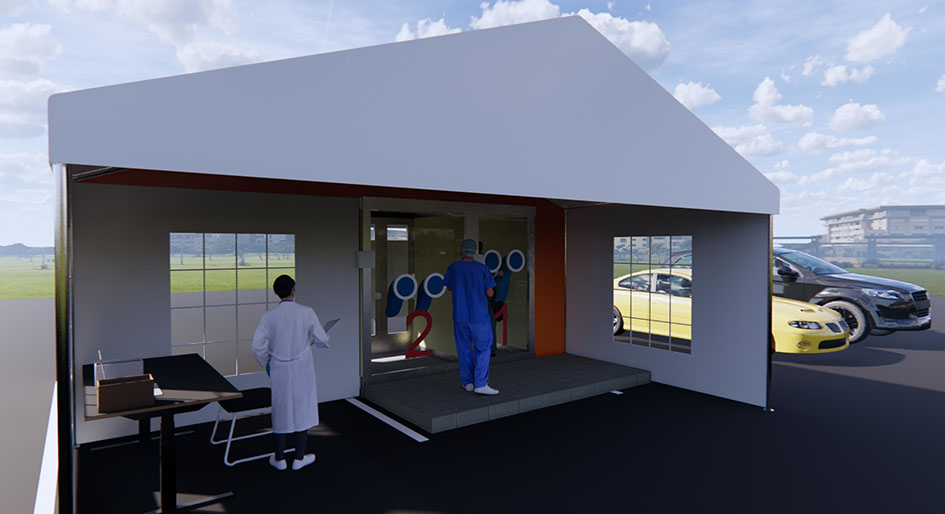To address the need for testing in urban areas for those without vehicles, CannonDesign architect Albert Rhee has created a walk-in testing booth that is slated for public use.
Rhee, a healthcare architect and husband to a Chicago-based nurse, is witnessing firsthand the enormous pressure caregivers are experiencing as they work to protect our communities while caring for COVID-19 patients.
“This is a challenge that is very personal to me,” explained Rhee. “Healthcare workers are extremely concerned about their personal safety and the safety of their families. The current strain on PPE supplies adds enormous stress on an already difficult situation.”
Keeping medical professionals healthy during the COVID-19 pandemic is essential in both slowing the rate of infection and meeting heightened staffing needs. Coronavirus testing operations are often the first physical point-of-contact between a healthcare provider and patient, bringing with it an inherent risk of transmission.
According to CannonDesign, large drive-thru testing operations have proven effective in limiting provider-patient exposure and accelerating test administration here in the United States. But this form of testing requires significant PPE supplies, running low due to a global shortage, for testing center staff and administrators. It also presents accessibility challenges for communities where large segments of the population don’t have access to a vehicle.
A walk-in testing booth provides an alternative solution that eliminates physical provider-patient exposure in a modular format that is simple to deploy for temporary testing operations.
The design is based on testing operations already in place at Yang Ji General Hospital in Seoul, South Korea (featured in this YouTube video). Similar solutions have emerged throughout the world, but design development and production seem to be limited to single-user, single-site applications.

CannonDesign developed a drawing set for the modular system to establish a universal basis of design for broad-scale production and implementation of these walk-in testing booths.
Rhee began to search for a design solution that might eliminate provider-patient exposure completely, thus reducing the consumption of PPE supplies. While monitoring recent COVID-19 developments in his hometown of Seoul, South Korea, he came across a local news segment exploring Yang Ji General Hospital’s novel solution for public testing: a telephone booth-inspired testing enclosure.
The booth system can be deployed on virtually any flat, outdoor surface and be powered by a single household electrical outlet. The dual-booth system is designed to accommodate alternating patient flow. While one booth is occupied by a patient, the adjacent booth can undergo a 10-minute disinfection process in preparation for the next patient.
Rhee began to search for a design solution that might eliminate provider-patient exposure completely, thus reducing the consumption of PPE supplies. He also wanted to find something that could be effective in his own Chicago neighborhood.
While monitoring recent COVID-19 developments in his hometown of Seoul, South Korea, he came across a local news segment exploring Yang Ji General Hospital’s novel solution for public testing: a telephone booth-inspired testing enclosure.
The interview detailed how nearby hospitals expressed interest in the system, only to learn that the staff at Yang Ji General Hospital had constructed their booths without drawings or detailed plans. Rhee drew upon his own experience to develop a drawing set adapted from what he observed in the video.
The resulting design documents are a collaboration between Rhee and Buffalo-based mechanical engineer, Raymond Shultz, PE. Together, they hope that sharing these drawings will help to advance and accelerate the deployment of these modular systems in cities across the globe.






